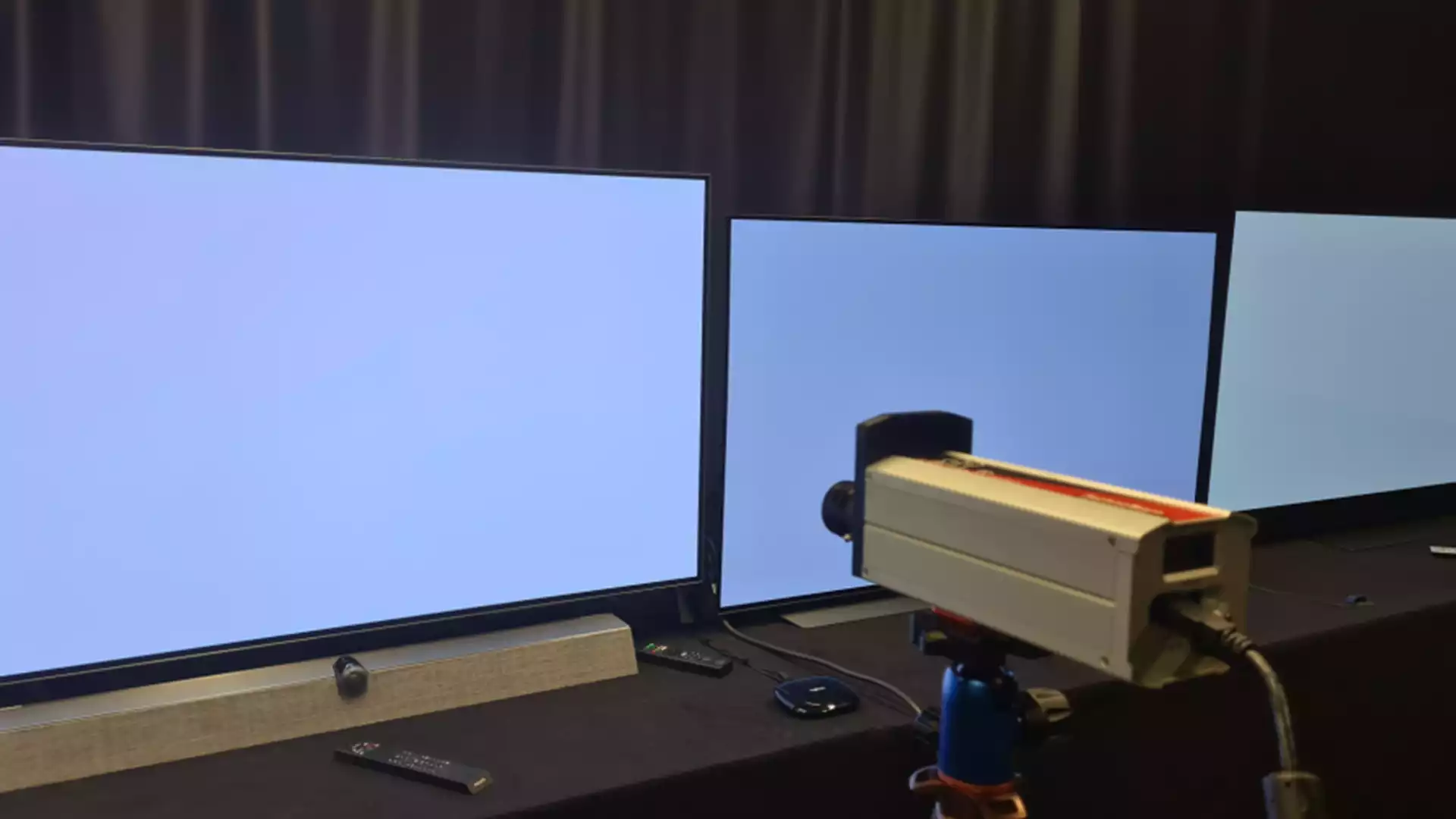We use our TechnoTeam LMK 98-3 video photometer to measure the luminance of the screens at regular intervals, including on a white test screen. Our measuring device has a resolution of 1,380 by 1,030 measuring points. This allows full-surface measurement of the entire screen, not just point-by-point measurement, as is the case with a spectrometer or color calibration system, for example. Although the result resembles a screenshot of a screen, it is a measurement image in which each pixel represents a discrete measurement value. This difference is important to correctly interpret the measurement images published here.
Until the end of September, these luminance measurements were a monotonous affair. But after a good 2,350 hours of operation, the first significant changes are now appearing in the measurement results. At least the belly band of the news program can be made out in the measurement images of the OLED TVs. The effect is most obvious in the luminance measurement of the LG OLED55CX9LA. However, these structures are also visible in the measurement images of the Panasonic TX-55HZW2004 and the Philips 55OLED935, albeit in a weaker form. While you can still only see the clusters of the backlight on the LCD screen of the Samsung GQ55Q95T. The changes are still minimal. The luminance differences are in the order of a few nits, just above the statistical deviations of the brightness distribution of the respective screen. The trained eyes of our measurement technicians now also recognize permanent contours in the white test image, but nothing of that is currently visible in the colorful video image.
What puzzles us is the nature of the ghost images. It is generally assumed that OLED pixels that shine brighter than their neighbors over a longer period of time age faster and thus lose more luminosity over time. However, we measured an opposite effect: Image areas that have to shine disproportionately brightly, for example the writing in the news belly band, also shine brighter than their surroundings in the white test image. If it were a classic afterglow effect, the pixels would have to equalize their brightness after some time. However, the effect remains even after 48 hours in standby and several manual pixel refreshes in our test candidates.
We informed the manufacturers about our measurement results and asked for an explanation. Panasonic then suggested manually performing a pixel refresh several times to bring the luminosity of the individual pixels back into line. However, this did not bring about any change. Customers who notice serious ghosting on their Panasonic TVs will be checked by the manufacturer’s service department, which will then decide how to proceed.
TP Vision, the manufacturer of the Philips TV, initially also suspected an afterglow effect. Permanent structures should actually appear as shadows, because loaded pixels decrease in brightness. However, the opposite effect has already been observed there. We have not yet received an answer from LG.
In our opinion, one possible reason for this phenomenon could be that the refresh algorithms simply overdo it. In principle, these functions register how strong and long each subpixel was electrically loaded and readjust the characteristics in the refresh rounds accordingly. It may be that they overshoot the mark with some models. That would at least explain the differences between the individual manufacturers.
Follow us and check out our social media accounts on Twitter, Facebook & YouTube ►
● on Twitter ► esport.directory
● Facebook ► esport.directory
● Youtube ► esport.directory
StarCrafttips, StarCrafttricks, StarCraftcheats, StarCrafthacks, StarCrafthacks2022, StarCrafttipspro, StarCraftpaidcheats, StarCraft, StarCrafttipsandtricks, StarCrafttipsandtricks2022, StarCrafttipsandtricksforbeginners, StarCrafttips, StarCrafttricks, StarCrafttrickshots, StarCrafthacks, StarCrafthacksfree, StarCrafthacksfree2022,




